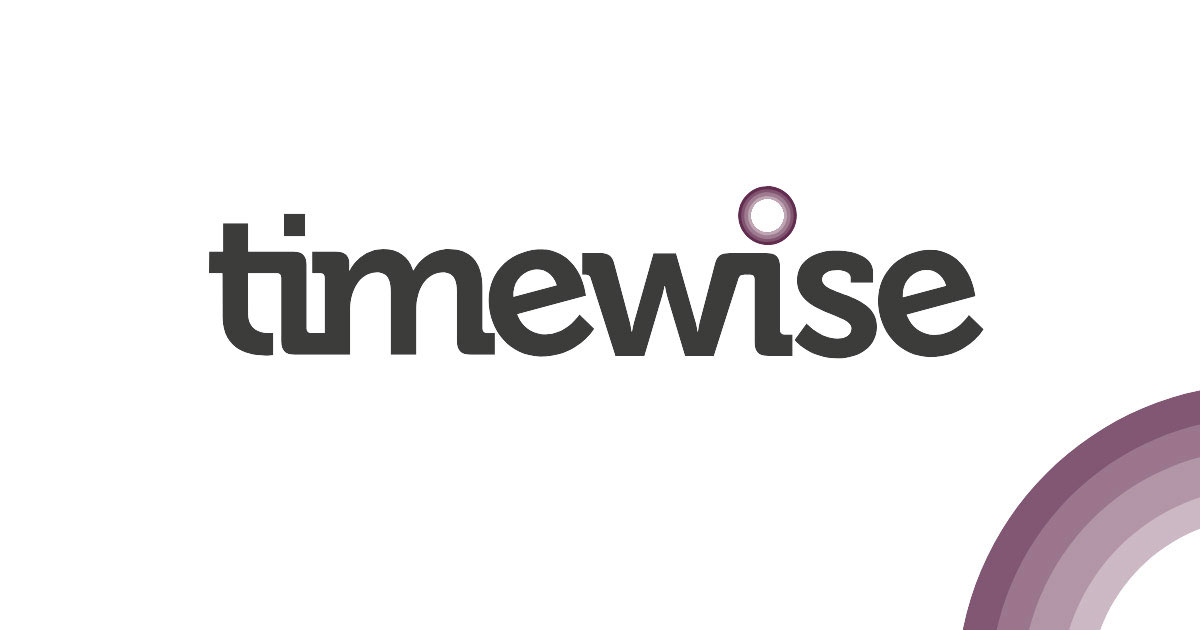

 The high prevalence of flexible working amongst Britain’s SMEs seems to have grown, in the first instance, out of necessity. Workload is often volatile and finances precarious, so a permanent staff working 5 days a week just isn’t helpful. It works better to keep staff time closely pegged to output.
The high prevalence of flexible working amongst Britain’s SMEs seems to have grown, in the first instance, out of necessity. Workload is often volatile and finances precarious, so a permanent staff working 5 days a week just isn’t helpful. It works better to keep staff time closely pegged to output.
Jenny Vadevalloo of Timewise Jobs, reports that her clients from smaller businesses frequently look to hire quality part-time staff: “Let’s face it, when a new business reaches the point where it needs a Marketing Director for the first time, it rarely needs that level of seniority for more than a few days a week. And it certainly can’t afford the full-time salary the role would demand.”
Jenny adds, “SMEs can do very well through part-time and flexible recruitment. They can access top skills for the pro rata salary that’s within their budget.”
Adam Marshall, Executive Director of Policy and External Affairs at the British Chambers of Commerce, agrees. He adds that by hiring people into part-time or flexible roles, a small business can also expect to reach a larger talent pool and attract experienced candidates, including those with a ‘portfolio career’ or family commitments. “You can often get skills and talents that you might not otherwise be able to get in your workforce, and you also have the potential to attract individuals to your business you might not be able to take on for full-time, nine to five work,” he says.
To a large extent, flexible working grew out of small business, as a way for entrepreneurs to balance other commitments during the startup phase. Linda Aitchison, Managing Director at the Marketing Room, resists the ‘mumpreneur’ label, but says it seemed natural to work flexibly when she was juggling bringing up a family with launching the West Midlands-based creative marketing agency 10 years ago.
“All but two of our team are mums of children now aged from seven to 16, so we have worked hard to create opportunities for flexible working,” Aitchison says. “Being widowed means that I have more responsibilities within my family on a practical level than before, so I finish early on certain days to be at home with my children after school, but I make these hours up at the weekend.”
Flexible working can take many forms, including part-time, job-sharing or splitting, home and teleworking, or freelance work. Some people work staggered hours, enabling them to work full-time, but with different start and finish times; others work compressed hours, fitting in the standard contractual hours over fewer days.
“Not everyone will undertake a revolutionary redesign of the way they fill vacancies and the way they approach work, for some it’s as basic as allowing individuals to work at home as and when they need to,” says Marshall. “The majority of small businesses that operate flexible working do so because it makes good sense for their business and enables them to get the best out of their workforce.”
As small businesses grow, it can be easy for them to retain a strong culture of flexible working, as they’ve grown up with it and understand its benefits.
Simon La Fosse’s technology search firm, La Fosse Associates, has a staff of 70 and has been fourth in the Sunday Times Best 100 Companies to Work For for the past two years.
Allowing staff to do things in the way they want to do, that fits around their work schedule and family commitments inevitably reaps results, he argues. “Nobody came to work to do a bad job and you have got to remember that, so it’s easier to just give as an employer, and you find it comes back in spades,” he says. “The person who knows they are being trusted by you to do the right thing, invariably will do the right thing.”
A more flexible approach and even different skills are needed to manage teams who work flexibly, with a focus on employee effectiveness and output rather than simply clocking in and out. But La Fosse believes that this is a vital part of a successful business, anyway. “Any company that hasn’t got systems in place to measure output is a company that’s totally out of control,” he says. “Just making sure everyone turns up at the right time and stays late is lazy, rubbish management, really. It encourages presenteeism, which I think is appalling.”
It’s precisely this kind of culture change that small business owners and their employees are best placed to lead, Marshall insists. “Where we see it being a business and employer-led proposition, flexibility works fantastically,” he says. “Employers and employees are perfectly capable of coming together to develop different ways of working that allow both to get maximum benefit.”
Published June 2014

The business world has come a long way in its journey to embracing flexibility. “There is now buy-in to the benefits at a strategic business level. Ten years ago there wasn’t that acceptance,” says Timewise Co-Founder, Karen Mattison.
Despite this willingness to consider flexibility, businesses struggle to justify it at the operational level. Faced with a tough economic environment, KPIs to meet and demands on their budgets, leaders find it impossible to commit to the major expense and upheaval they believe might be needed.
It doesn’t need to be that way. “The Holy Grail that everyone is searching for is the generic business case for flexible working, but it doesn’t exist,” says Karen. “Rather than being a big change management piece, companies should look at flexibility on a project by project basis. It is a tool they can add into the mix.”
Karen adds that it is far less onerous for businesses to consider flexible working as one of a number of tools available to them, and to ask themselves what they will lose by ignoring it in a particular scenario. “There’s a danger that if you can’t do everything you end up doing nothing,” she cautions.
CBI Director for Employment and Skills Neil Carberry agrees it is important that companies take flexible steps if they are to compete. “As a business, you need to access the widest pool of skills and talent to maintain competitiveness,” he says. “It makes sense to take that wherever you can find it.”
Those who successfully adopt remote working techniques can employ them during transport strikes, snow storms and office moves. Flexibility also feeds into a positive brand for a business and creates an engaged and effective workforce. “Staff who are engaged will go the extra mile.”
Neil identifies strong leadership and line manager understanding of flexibility as being crucial to success. He also sees customer service businesses increasingly matching demand with flexible shifts. “If you’re running a 12 hour customer service operation it makes sense to slot people in at times they want to work.”
David Dunbar, General Manager of BT Flexible Working Services, agrees that cultural strength and staff engagement are extremely valuable for business and flexible working is the way to achieve it. “Flexible workers can respond to changing demands, can get products to market more quickly and adapt to change easily,” he says.
Dunbar points out that when it comes to the business case for flexible working, companies often seize on the most tangible savings of property and infrastructure. An agile approach usually means 30-40% of the desks and space can be lost. “In very simple terms, you can save on space and reduce churn. However the business case is much more complex and much bigger than that.”
The benefits range from recruitment, engagement, productivity and culture, to disaster recovery and a firm’s carbon footprint. “If you have a workforce that is more agile, flexible and clear on their objectives, they can work more productively. It is a difficult thing to build into the business case but is probably the single biggest benefit. If you can get 20% more productivity from your workforce that puts any property savings in the shade.”
For financial services business Northern Trust, the promotion of flexible working is a major differentiator in an industry that is famed for long hours and male dominated environments.
The company last year initiated a remote working pilot programme to enhance employee engagement, one of its top three global priorities. Four business departments took part in the trial and the concept is now being rolled out to other areas.
Pamela Hutchinson is Chief Diversity and Inclusion Officer EMEA & APAC. “At the start of the pilot there was 82% positive engagement for the initiative. By the end it was 92%,” she says. “Even the employees who were not taking part supported it and managers did not see any adverse impact on team performance.”
“Flexibility is something we have always been hugely proud of,” she says. “We want our employees to feel engaged.”
In the last year, the business approved 90% of flexible working requests. A third of those working flexibly are men, and 10% are senior. Hutchinson says a pro-flexible approach increases engagement, loyalty and staff retention. “We also have more women working here,” she adds.
Technology has played its part. “Younger people coming into the company want to work differently. You have to move with the times if you want to recruit talent.”
Published June 2014
Heather Greig-Smith is a journalist writing about flexible working issues.
http://coachfactoryoutlet.cigops.com/ | http://coachfactoryoutlet.nkcaa.com/ | coach factory outlet